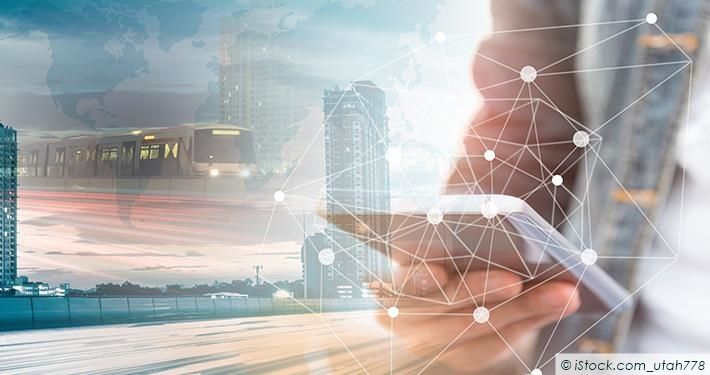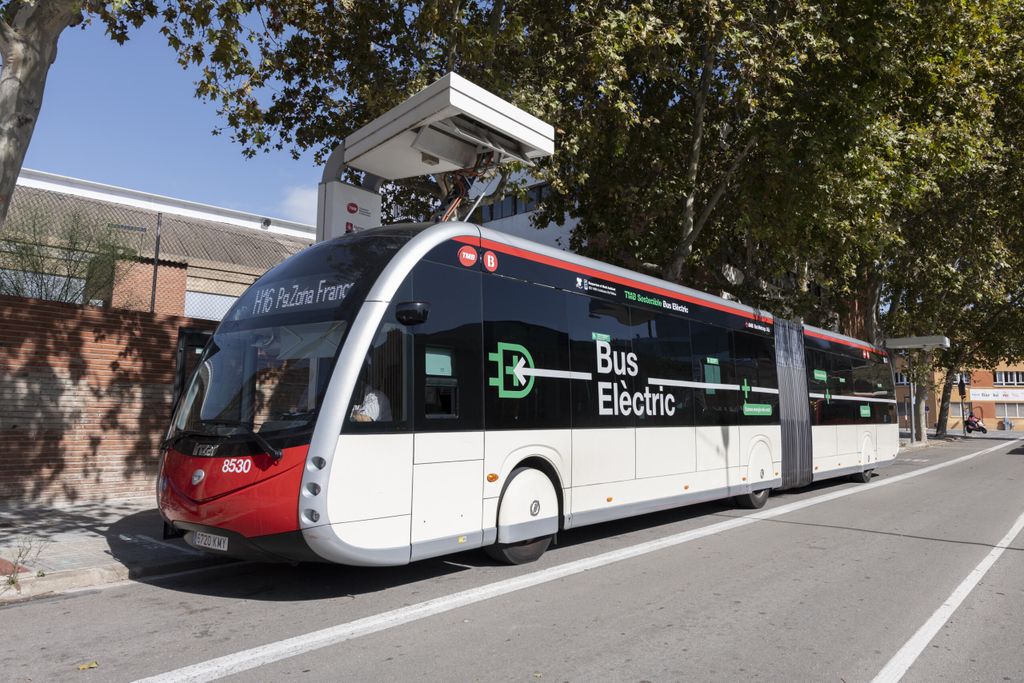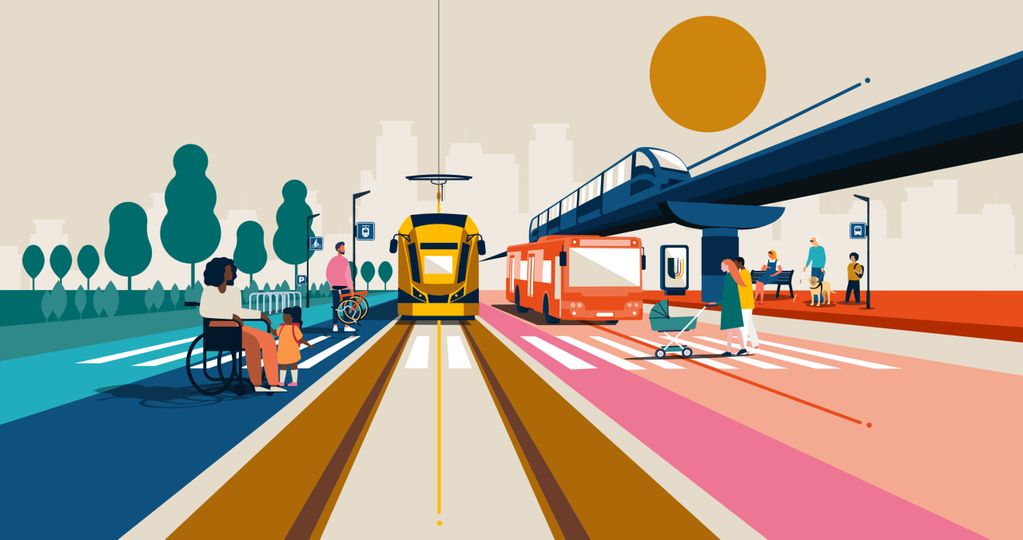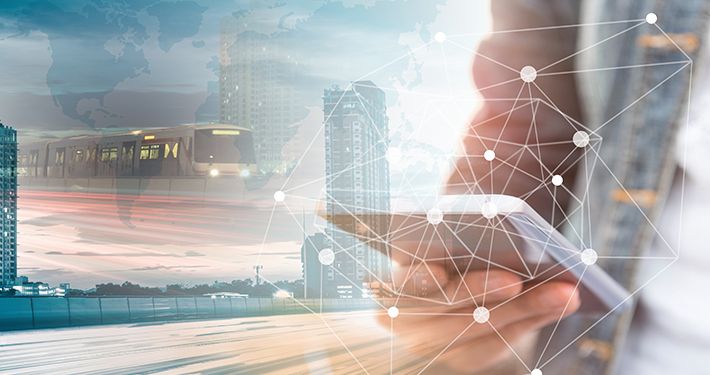

Blog: Artificial Intelligence in Public Transport - Profound Paradigm Shift or Incremental Improvement?
AI in PT – Profound Paradigm Shift Or Incremental Improvement?
Google’s CEO Sundar Pichai was recently interviewed about artificial intelligence (AI), calling it “the most profound technology humanity is working on right now”and going even further – placing it above the human inventions of fire and electricity in importance and potential impact on mankind.
Whatever your feelings are about AI today, it would be unwise to take such comments lightly. Especially since not only voices from Google, admittedly a company that has everything to gain from bolstering the image of a new technology, but also respected academics like Stephen Hawking see the same profound impact potentially being unleashed through AI. Albeit with a grim caveat – AI, if left uncontrolled, could also spell the end of humanity. A doomsday prophecy that the likes of Elon Musk subscribe to.
Farfetched future scenarios aside – AI, depending on your definition of it, is a reality already today. And it is a technological reality which will have far reaching effects in most industries, if not all – and definitely mobility.
Why do we say that? One of the prevailing trends in business today is digitalisation – a broad term that to a certain extent is even less understood than AI, even by persons in the midst of ongoing digitalisation projects. A grandiose example is the conversion of paper books to PDF versions that Google has been undertaking in the past years. A simpler example is the move from paper and pen in bus operations, to fleet management systems for coordinating arrivals, departures and many more aspects of the public transport business.
The second big trend that follows digitalisation close at its heels is Big Data, which could be seen as a consequence of our newfound penchant for storing all our data digitally, and in turn as an enabler of the more advanced application of digital technologies to society – Artificial Intelligence.
The impact of AI on public transport should be seen in light of these current trends of digitalization and big data. Because what AI actually means, is to transfer the cognitive functions that we usually associate with the human mind – for example learning and problem solving – into our digital systems. And we don’t have to make use of a very vivid imagination to hypothesise that automating even more of our core human skills and capabilities will have a profound effect on our operations.
When hearing that a computer could mimic the essence of what being human is, it almost sounds like magic – it’s almost offensive to suggest that we somehow have unlocked the mystery behind what makes us unique. And from a philosophic point of view it might just be offensive – but from an engineering standpoint it is more of an exercise in advanced mathematics. A scholar specialising in natural language recognition at HKUST once tried to explain AI to me. Starting with the basics of normal computer programming – if ‘x’ equals ‘y’ then ‘z’ – the basic levels of AI today do not deviate much from this mantra, but what is massively different is the amount of computing power we have at our disposal, even at a consumer level.
If I were to describe the massive exponential increase in available computing power my favourite example comes from healthcare. Since some 20 years back we have had the knowledge on how to decode a string of human DNA, the building blocks that make up our beings, the genome. In 2001 the cost of decoding one human genome was roughly 300 million USD, in 2006 just five years later it was down to 14 million USD. Today the cost is around 1000 USD – making it available to mass market healthcare. The impact of exponential increases in performance and power of incredibly complex technologies is staggering. This is important – because AI has been a research field for a long time, and never really broken through to a commercialisation stage due to lack of surrounding enabling technologies. This might now be different with the amount of computing power available. And what that means for the development of AI at the most basic level is simply that the amount of possible if x equals y then z equations possible in any given time span is way larger than before – and thus unlocking intelligence in machines never before seen possible.
But as mentioned, that is just the basic level of AI. The second level of AI comes when machine learning is applied, basically meaning that the system – while processing vast amounts of data – not only can increase its precision by answering yes and no to more and more questions, but also automatically hone its capabilities by either trying to find patterns in a data stream, or being rewarded and punished for its choices. Much like we learn.
The most successful showcases of AI technology to date include the impressive feats of Deep Blue and Watson, beating out champions in chess and Jeopardy! respectively. More recently an AI system was able to beat the reigning Go champion. Go is a game that is famous for having the most ways to win, and an ‘incomputable’ number of possible moves. Yet an AI system was able to trounce the reigning champion – which should speak volumes for the leaps in performance the technology has made in recent times.
So what have all these recent developments in AI to do with public transport? It’s a fair question and we are to a certain extent already seeing impact in a few areas, for example route rationalisation, predictive maintenance and demand management.
AI will come to impact all areas of the public transport system – how we run our assets and how to keep them running as much as possible. And more AI powered solutions will come, as I will postulate below.
How and where we run assets
Traditionally routes have been static affairs, regardless of options available with less traffic or where passenger loads are expected to be high, buses have been confined to their determined route. Even with powerful route rationalisation software we have only been able to make the static routes more efficient. But, with increased number of available big data streams from traffic systems, and smarter applications to analyse this data in real time – that might no longer have to be the case. We can imagine a bus line that changes to a different route when congestion is high on its original route. We can also imagine buses switching passenger loads between each other if the intended destination of the customer is known before boarding. Through massive amounts of data and real time powerful analytics, an organic and ever shifting allocation of bus assets seem possible. To the extent that drivers are still involved at this stage they could be directed and redirected in real time via a heads up display in their work space. A system that can combine the convenience of ride hailing with the efficiency and cost effectiveness of mass transport.
How we keep assets running
The seed of predictive maintenance was sowed a long time ago. It is already absolutely imperative in for example aviation where the break down tolerance is zero. But within public transport we see a mixed bag of practices and technical solutions today. Many if not most highly developed operators already understand the value of changing parts before something breaks. The small loss of a few weeks or months of life of a part is heavily outweighed by the decrease of vehicles stranded off the road and the disgruntled riders and public outcry that often follows. But this has mostly been done by means of experienced mechanics and technical managers that have relied on historical data and gut feeling. The new paradigm is to rely instead on big data, aggregated from vehicles all over the world – and not only basing the lifecycle predictions of parts on vehicle specifications – but basing it on actual driving conditions, as measured by the vehicles on-board diagnostics. Here AI will play an important role in automating the process in order to be able to provide individualised maintenance plans per vehicle and even per driver. Imagine for example a system knowing almost exactly when a vehicle of a certain specification will need to change an alternator in order to not get stranded, but at the same time also recognising the working hour pattern of its drivers so that it schedules maintenance around both the asset needs, as well as the human needs. The real value here, that most of us that have worked with IT system integration understand, is that AI could allow for an organic increase in capabilities and instantaneous allocation of resources where they make most sense without having to make a change request for every single improvement. In theory an AI should be like an employee with a purpose – once given, the rest will work itself out on its own.
Finally, perhaps the biggest and most exciting development that will be unlocked by AI is autonomous vehicles.
This topic is worth its own article and it’s impossible to cover it all in a short paragraph. But if there is one thing to mention here then it is: without AI autonomous vehicles can never enter city operation. And not just any AI, this requires AI of a complexity that just doesn’t exist yet. And why do we need this super AI? Commercial vehicles are already getting more and more automated, and fully automated vehicles already exist in many places, like ports and mines. Making a vehicle do its rounds automatically is not the hard part – the hard part is handling the world around it. And there is a massive gap between a city environment and a mine that is closed to the public. The mine is predictable, definable, and easy – the city is unpredictable, ever-changing, and difficult. We know how to program vehicles to deal with roads, we can even make them navigate flawlessly without road markings and signage. And, we know how to programme vehicles to deal with co-motorist behaviour, we can even make them communicate with fellow road users through human machine interfaces like lights and LED screens. But, we do not know how to program vehicles to deal with the unknown unknowns, the black swans of the road if you will. And unpredictable, freak accidents happen every day, many times over, all over the globe. In order to break the barrier between just operating in safe predictable spaces and in the real world, AI is absolutely essential. And we are not there yet. But work is ongoing every day. The most exciting and disruptive change that this could bring is something that is coupled with the other major disruptive movement in PT – electrification. The biggest driver of today’s mass transport system looking like it does – larger and longer vehicles – is cost – and what drives that cost? Drivers and drivelines. With autonomous vehicles and electric propulsion, that no longer would be true and this could have a massive impact, to the size of vehicles for one, and totally upend the current dogma of fixed routes and scheduling. This could enable small pods, managed through a central system, working on demand, ending the old adage – bringing people from where they are to where they want to go. (Not from where they are not, to where they don’t want to go, as the cynical PT pundits have long said).
The solutions and new systems that AI can enable are thus massive. But as a small reality check, there was an experiment carried out by Microsoft a year or so ago where an AI powered Twitter bot was set free on the internet. It was allowed to communicate with other users on the social media platform and interact and adapt to their behaviour. The bot was soon corrupted by other users and swiftly taken offline by Microsoft. This was a good example to show the shortcomings of AI – what is intelligence without morals and wisdom? How intelligent does an AI need to become to have those two qualities? And what would that mean for humanity?
For now though, AI is far from intelligent enough for morals and wisdom, but that also begs the question, is it intelligent enough to be of value to us? Some applications of AI, like fully autonomous vehicles in city centres might not be possible yet, but others definitely are. And the potential to unlock exponential improvements in operations is already here, and is improving day by day. As someone deeply involved with public transport, it would be reckless to not follow these developments closely. And to answer the question posed in the title, AI is incrementally improving, but don’t be surprised if a profound, path-breaking development happens in the coming five to ten years!
exclusive resources












